World Malaria Day is observed annually on April 25th to raise awareness about the global burden of malaria and to promote efforts to control and eliminate the disease. Malaria is a life-threatening disease caused by a parasite transmitted through the bites of infected mosquitoes. It disproportionately affects people in sub-Saharan Africa, but it is also present in many other regions of the world.
World Malaria Day was first observed in 2008, following a decision by the World Health Assembly to designate the day as an occasion for countries to showcase their progress in malaria control and to renew their commitment to fighting the disease. The day is also an opportunity to highlight the need for increased investment in malaria prevention and treatment, as well as to recognize the contributions of partners and stakeholders who are working to reduce the burden of the disease.
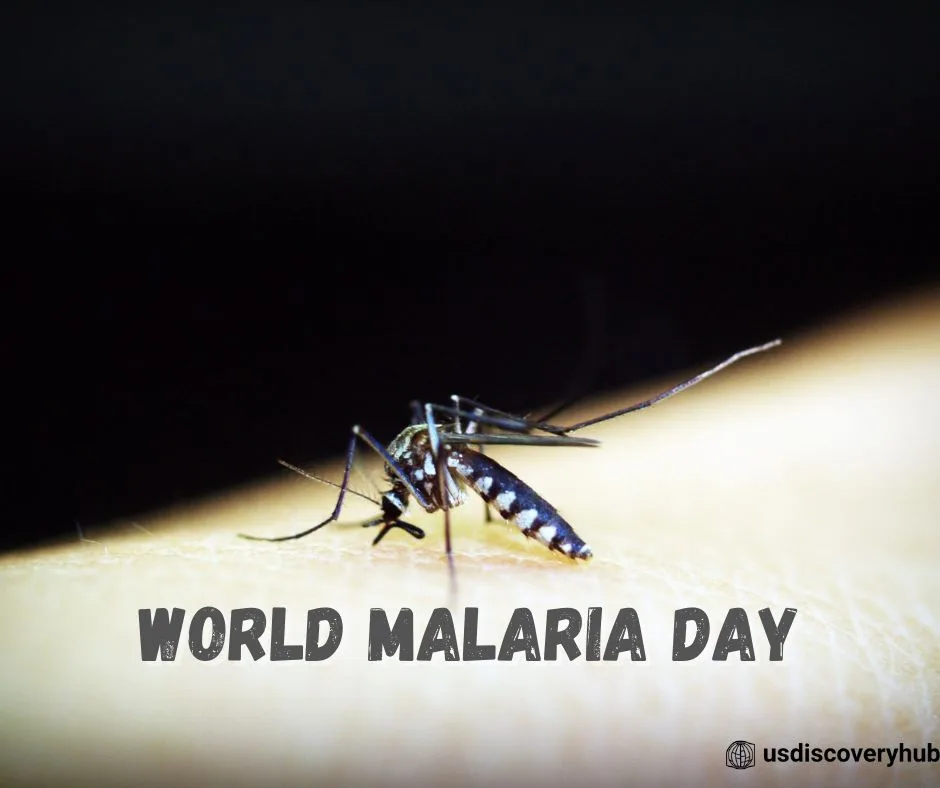
Each year, World Malaria Day is marked by a different theme, which reflects the current priorities in malaria control and elimination. The themes in recent years have included “End Malaria for Good” (2020), “Zero Malaria Starts with Me” (2019), and “Ready to Beat Malaria” (2018).
History of World Malaria Day
The history of World Malaria Day can be traced back to the 60th session of the World Health Assembly in 2007. During that session, the Member States of the World Health Organization (WHO) adopted a resolution that recognized the burden of malaria as a major public health problem and called for increased efforts to control and eliminate the disease.
In response to this resolution, the WHO and its partners launched a global advocacy campaign to raise awareness about malaria and to mobilize resources for its control and elimination. As part of this campaign, it was proposed that a day be designated as World Malaria Day to focus attention on the disease and its impact on global health.
On April 25th, 2008, the first World Malaria Day was observed. The theme for that year was “Malaria: A Disease Without Borders”, which highlighted the global nature of the disease and the need for coordinated action across borders to control and eliminate it.
Since then, World Malaria Day has been observed annually on April 25th, with each year’s theme focusing on a different aspect of malaria control and elimination. The day has become an important occasion for governments, non-governmental organizations, and communities around the world to showcase their progress in fighting malaria and to renew their commitment to ending the disease.
World Malaria Day Activities
World Malaria Day is an opportunity for individuals, organizations, and governments around the world to raise awareness about malaria and to promote efforts to control and eliminate the disease. Here are some potential activities that can be organized to mark World Malaria Day :
- Public awareness campaigns: Organize public awareness campaigns to inform people about the risks of malaria, and to promote prevention and treatment measures. These can include radio and TV ads, billboards, social media campaigns, and community outreach activities.
- Community mobilization: Mobilize communities to take action against malaria, by organizing community meetings, workshops, and training sessions. Encourage individuals to participate in malaria control efforts, such as using mosquito nets, seeking prompt treatment for malaria symptoms, and supporting local malaria control programs.
- Advocacy and policy engagement: Advocate for increased political and financial commitments to malaria control and elimination efforts, and engage with policymakers and stakeholders to promote evidence-based policies and interventions.
- Fundraising events: Organize fundraising events to support malaria control efforts, such as charity runs, auctions, and benefit concerts. These can raise awareness about malaria while also generating financial support for malaria control programs.
- Research and innovation symposiums: Organize research symposiums to discuss the latest advances in malaria prevention and treatment, and to identify opportunities for further research and innovation. These can bring together researchers, policymakers, and other stakeholders to share knowledge and promote collaboration.
- Health screenings and treatment campaigns: Organize health screening and treatment campaigns to identify and treat individuals with malaria, particularly in high-burden areas. These campaigns can include mobile clinics, door-to-door visits, and community-based testing and treatment programs.
By organizing these and other activities, individuals and organizations can contribute to efforts to control and eliminate malaria, and to raise awareness about the importance of continued investment and commitment to this goal.
World Malaria Day interesting Facts
Here are some interesting facts about World Malaria Day :
- World Malaria Day is observed annually on April 25th to raise awareness about the global burden of malaria and to promote efforts to control and eliminate the disease.
- Malaria is caused by a parasite transmitted through the bites of infected mosquitoes, and it is a life-threatening disease that disproportionately affects people in sub-Saharan Africa.
- According to the World Health Organization (WHO), there were an estimated 229 million cases of malaria worldwide in 2019, with 409,000 deaths.
- Malaria is preventable and treatable, but access to effective prevention and treatment remains a challenge in many parts of the world.
- In recent years, there has been significant progress in malaria control and elimination, with many countries achieving significant reductions in malaria cases and deaths.
- The theme of World Malaria Day changes every year, with recent themes including “End Malaria for Good” (2020), “Zero Malaria Starts with Me” (2019), and “Ready to Beat Malaria” (2018).
- The WHO recommends a combination of interventions for malaria control, including the use of insecticide-treated bed nets, indoor residual spraying, and prompt diagnosis and treatment of malaria cases.
- Many organizations and initiatives are working to reduce the burden of malaria, including the WHO, the Global Fund to Fight AIDS, Tuberculosis and Malaria, and the Roll Back Malaria Partnership.
- Malaria is not just a health issue; it also has significant social and economic impacts, particularly in the most affected regions of sub-Saharan Africa.
- Despite the progress made in malaria control and elimination, there is still much work to be done to achieve the goal of a malaria-free world. Continued investment and innovation are needed to sustain and accelerate progress in the fight against malaria.
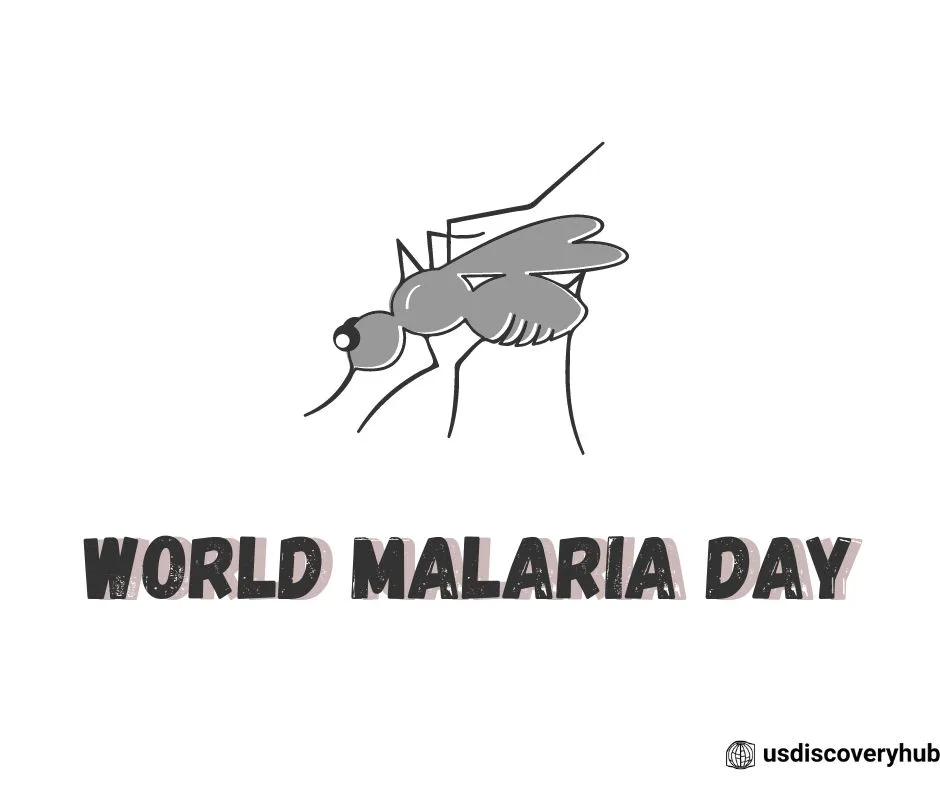
Global Malaria Programme
The Global Malaria Programme (GMP) is a division of the World Health Organization (WHO) that is dedicated to the control and elimination of malaria worldwide. The GMP provides technical guidance and support to countries, as well as conducting research and advocating for increased funding and resources for malaria control and elimination efforts.
The primary goal of the GMP is to reduce the global burden of malaria and ultimately to eliminate the disease as a public health threat. To achieve this goal, the GMP focuses on a number of key areas:
- Technical guidance and support: The GMP provides technical guidance and support to countries in the development and implementation of malaria control and elimination strategies. This includes providing guidance on the use of effective prevention and treatment interventions, as well as on the management of drug-resistant malaria.
- Surveillance and monitoring: The GMP supports countries in the collection and analysis of data on malaria incidence, prevalence, and mortality. This helps to inform decision-making and guide the allocation of resources for malaria control efforts.
- Research and development: The GMP conducts and supports research on new and innovative malaria prevention and treatment interventions. This includes the development of new drugs, vaccines, and mosquito control strategies.
- Advocacy and resource mobilization: The GMP advocates for increased funding and resources for malaria control and elimination efforts. This includes working with governments, donors, and other stakeholders to raise awareness of the importance of malaria control and to secure the necessary resources for effective interventions.
- Partnerships and coordination: The GMP works with a range of partners, including other UN agencies, civil society organizations, and the private sector, to coordinate and strengthen malaria control efforts at the global, regional, and national levels.
Through these activities, the Global Malaria Programme is working to achieve the global goal of reducing the malaria burden and ultimately eliminating the disease as a public health threat.
National Malaria Eradication program
The National Malaria Eradication Program (NMEP) is a public health initiative that aims to control, reduce, and eventually eradicate malaria in a specific country or region. The program involves various strategies, including:
- Vector control: This involves controlling the mosquito population that spreads malaria. It can be achieved through the use of insecticide-treated bed nets, indoor residual spraying, and larviciding.
- Diagnosis and treatment: This involves early detection and prompt treatment of malaria cases. This can be achieved through the use of rapid diagnostic tests and effective antimalarial drugs.
- Health education and community engagement: This involves educating communities on malaria prevention and control measures, as well as encouraging community participation in malaria control activities.
- Monitoring and evaluation: This involves monitoring the progress of the program and evaluating its effectiveness in reducing malaria cases.
The NMEP is usually implemented by the government in collaboration with other stakeholders, such as non-governmental organizations (NGOs), international agencies, and the private sector. The program has been successful in reducing malaria cases and deaths in many countries, but there is still much work to be done to achieve global malaria eradication.
The global burden of malaria
Malaria is a life-threatening disease caused by the Plasmodium parasite and is transmitted to humans through the bites of infected Anopheles mosquitoes. According to the World Health Organization (WHO), malaria is one of the world’s leading causes of death and disease, particularly in sub-Saharan Africa.
In 2020, there were an estimated 241 million malaria cases worldwide, which led to 627,000 deaths. The African region accounted for 94% of malaria cases and deaths, with children under the age of five being the most vulnerable group. Malaria is also a significant cause of maternal and infant mortality in endemic areas, contributing to poor health outcomes and hindering economic development.
Malaria is not just a public health issue but also an economic issue, as it places a significant burden on health systems, reduces productivity, and contributes to poverty. According to the WHO, malaria costs the African continent an estimated $12 billion each year in lost productivity, healthcare costs, and other indirect costs.
Despite significant progress in malaria control and elimination efforts, the burden of the disease remains high in many parts of the world. The WHO has identified the urgent need for sustained investment in malaria prevention and treatment, as well as the development of new tools and strategies to combat the disease. Improved surveillance, community engagement, and cross-sectoral collaboration are also essential to reducing the global burden of malaria.
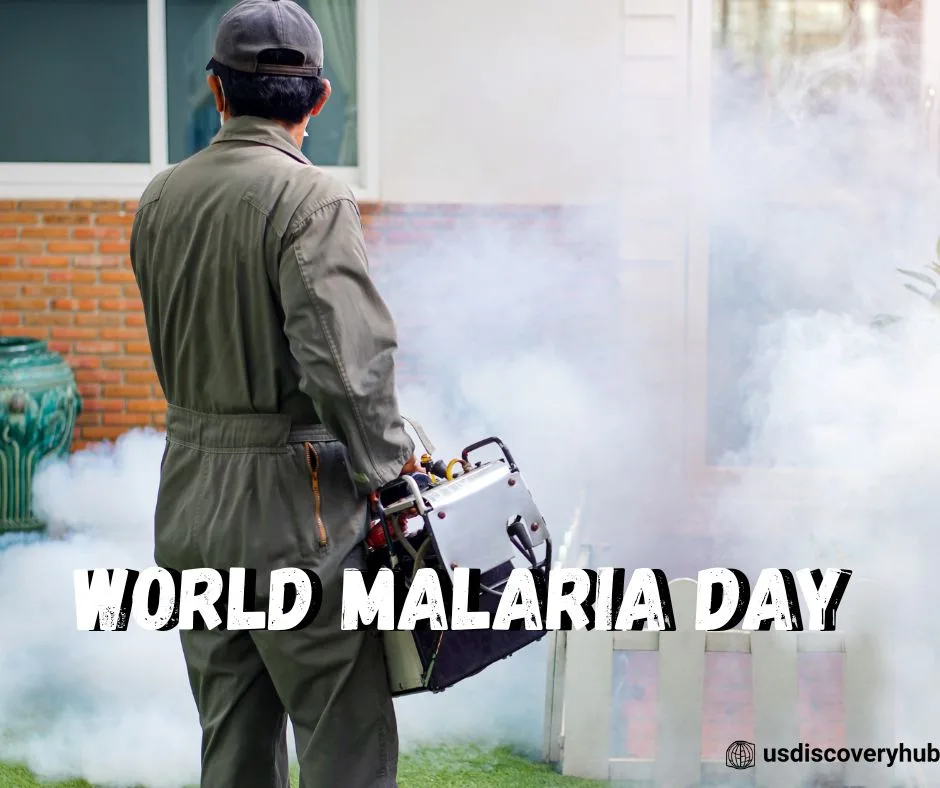
Advances in malaria prevention and treatment
Malaria is a serious global health challenge that affects millions of people every year, particularly in sub-Saharan Africa. Fortunately, there have been significant advances in malaria prevention and treatment in recent years. Here are some of the most notable advances:
- Bed nets: Insecticide-treated bed nets have been shown to be highly effective at reducing malaria transmission. These nets can last up to three years and are relatively inexpensive, making them an accessible intervention for many populations. In recent years, there have been innovations in bed net design, such as long-lasting insecticidal nets and nets that incorporate new insecticides, that have further improved their effectiveness.
- Indoor residual spraying: Indoor residual spraying involves spraying insecticide on the walls and ceilings of homes to kill mosquitoes that transmit malaria. This intervention has been shown to be highly effective at reducing malaria transmission, particularly in areas with high levels of malaria transmission. In recent years, new insecticides and improved spraying techniques have made indoor residual spraying even more effective.
- Antimalarial drugs: There are several types of antimalarial drugs that are used to prevent and treat malaria. In recent years, new drugs have been developed that are more effective and have fewer side effects than older drugs. For example, artemisinin-based combination therapies (ACTs) are now the standard treatment for uncomplicated malaria, and they have been shown to be highly effective in reducing the number of malaria cases and deaths.
- Vaccines: While there is currently no widely available vaccine for malaria, there have been significant advances in vaccine development in recent years. The most promising vaccine candidate is the RTS,S/AS01 vaccine, which has been shown to provide partial protection against malaria in clinical trials. While more research is needed to improve the effectiveness of malaria vaccines, this is a promising area of research.
- Genetic modification of mosquitoes: Scientists are exploring the use of genetic modification to control mosquito populations and reduce the transmission of malaria. One approach involves creating genetically modified mosquitoes that are resistant to the malaria parasite, while another approach involves creating mosquitoes that are unable to transmit the parasite. While this technology is still in the early stages of development, it has the potential to be a highly effective tool for malaria control.
Overall, these advances in malaria prevention and treatment offer hope for reducing the global burden of malaria. However, it is important to continue investing in research and development to further improve these interventions and ensure that they are accessible to all populations at risk of malaria.
The role of community engagement in malaria control
Community engagement is a critical component of malaria control efforts. Effective malaria control requires the participation and support of local communities, who play a crucial role in identifying and addressing the underlying factors that contribute to malaria transmission. Here are some ways in which community engagement can help in malaria control:
- Raising awareness: Community engagement can help to raise awareness about malaria, including its transmission, prevention, and treatment. This can involve community education campaigns, outreach programs, and community-led discussions about the importance of mosquito control and the use of insecticide-treated bed nets.
- Mobilizing resources: Communities can play an active role in mobilizing resources for malaria control, such as funds for insecticide-treated bed nets or other prevention tools. They can also help to identify local resources and partners that can support malaria control efforts, such as local health clinics or NGOs.
- Identifying and addressing local risk factors: Community engagement can help to identify local risk factors that contribute to malaria transmission, such as stagnant water sources or poor housing conditions. Local communities can work together to address these risk factors through initiatives such as community clean-up campaigns, drainage projects, or housing improvements.
- Participating in surveillance activities: Communities can participate in malaria surveillance activities, such as reporting suspected cases or providing blood samples for testing. This can help to identify areas of high transmission and target interventions more effectively.
- Promoting behavior change: Community engagement can help to promote behavior change around malaria prevention, such as the consistent use of bed nets or seeking prompt treatment for suspected cases. By involving community leaders and influencers, behavior change campaigns can be more effective and sustainable.
- Advocating for policy change: Communities can play an important role in advocating for policy change around malaria control, such as increased funding for prevention and treatment programs or improved access to healthcare services. By mobilizing their voices and engaging with policymakers, communities can help to create an enabling environment for malaria control efforts.
In conclusion, community engagement is critical to the success of malaria control efforts. By involving local communities in prevention, treatment, and advocacy activities, we can create more effective and sustainable interventions that address the underlying factors contributing to malaria transmission.
The impact of climate change on malaria transmission
Climate change is having a significant impact on the transmission of malaria. Malaria is transmitted by mosquitoes, and both the mosquitoes and the Plasmodium parasite that causes malaria are sensitive to changes in temperature, rainfall, and humidity. As the climate changes, these environmental factors are also changing, creating conditions that are more favorable for the spread of malaria in some regions.
One of the key impacts of climate change on malaria transmission is the expansion of the geographic range of malaria. As temperatures rise, regions that were previously too cold for malaria transmission may become suitable for mosquitoes and the parasite. This expansion of the malaria range has already been observed in some regions, such as the highlands of East Africa.
Another impact of climate change is the shift in the timing of malaria transmission. In some regions, the malaria season is becoming longer, with mosquitoes active for a greater portion of the year. This increases the risk of malaria transmission and makes it more difficult to control the disease.
Climate change is also affecting the intensity of malaria transmission. Warmer temperatures and increased rainfall can lead to greater mosquito populations, which in turn can increase the number of malaria cases. In some regions, climate change is also leading to more extreme weather events, such as flooding, which can create conditions that are conducive to mosquito breeding.
Finally, climate change is affecting the effectiveness of malaria control measures. For example, insecticide-treated bed nets may become less effective as temperatures rise, and the efficacy of some malaria drugs may be reduced in regions with high temperatures.
Overall, the impact of climate change on malaria transmission is a significant concern for global health. Addressing climate change and implementing adaptive strategies for malaria control will be essential in achieving sustainable progress in reducing the burden of malaria.
The economic impact of malaria
Malaria has a significant economic impact, particularly in endemic countries where the disease is most prevalent. The economic burden of malaria is both direct and indirect, affecting individuals, households, and communities, as well as national and global economies.
Direct costs of malaria include medical expenses, such as diagnosis, treatment, and hospitalization, as well as the cost of prevention measures such as mosquito nets, insecticides, and antimalarial drugs. These costs can be a significant financial burden on individuals and families, particularly those living in poverty.
Indirect costs of malaria include lost productivity and income due to illness and death. Malaria often affects individuals during their most productive years, leading to missed days of work or school and reduced productivity. This can have a significant impact on household income and can perpetuate the cycle of poverty.
Malaria also has broader economic impacts, affecting trade, tourism, and foreign investment. The disease can discourage foreign investment in endemic countries, as investors may perceive the risk of malaria as a barrier to business. Malaria can also affect tourism, as travelers may be discouraged from visiting endemic areas, leading to reduced revenue for local businesses.
The economic impact of malaria is not limited to endemic countries. Malaria also has a significant global impact, affecting international trade and development. The World Health Organization estimates that the global economic burden of malaria was $12 billion in 2017, with the majority of costs borne by endemic countries.
Investing in malaria control and elimination can have significant economic benefits, both in endemic countries and globally. Effective malaria control can lead to improved health outcomes, increased productivity, and reduced healthcare costs. It can also promote economic growth and development by creating a more stable and attractive environment for investment and trade. Therefore, it is essential to continue to invest in malaria prevention, control, and elimination efforts to reduce the economic burden of the disease and promote sustainable development.
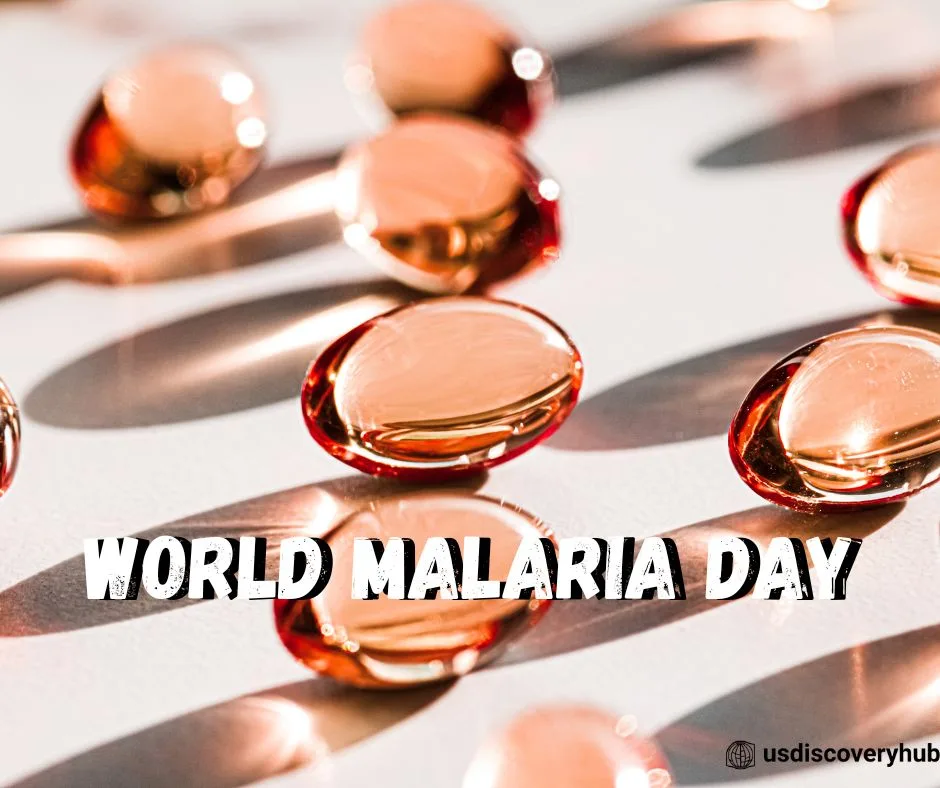
The role of technology in malaria control
Technology has played an increasingly important role in malaria control efforts in recent years, offering new tools and approaches to prevent, diagnose, and treat the disease. Here are some of the ways technology is being used in malaria control:
- Mosquito surveillance: Digital technologies such as geographic information systems (GIS) and remote sensing are being used to map mosquito breeding sites and predict malaria transmission patterns. This information can be used to guide targeted mosquito control efforts and improve the effectiveness of malaria control programs.
- Mobile apps and SMS messaging: Mobile apps and text messaging are being used to promote malaria prevention and treatment. Apps can provide information on the symptoms of malaria, locations of nearby health clinics, and reminders to take medication. SMS messaging can be used to deliver health messages and reminders to at-risk populations.
- Rapid diagnostic tests (RDTs): RDTs are simple, easy-to-use diagnostic tests that can quickly detect the presence of malaria parasites in a patient’s blood. These tests are often used in remote or resource-limited settings where laboratory-based testing is not available.
- Electronic health records (EHRs): EHRs can improve the efficiency and accuracy of malaria diagnosis and treatment by providing a central database of patient information. This can help health workers to identify high-risk patients and monitor the effectiveness of malaria control interventions.
- Insecticide-treated bed nets (ITNs): ITNs are a key tool in malaria prevention, as they provide a physical barrier between people and malaria-carrying mosquitoes. New technologies, such as long-lasting insecticidal nets (LLINs), are being developed to increase the durability and effectiveness of ITNs.
- Data analytics: Data analytics can be used to monitor malaria transmission patterns, identify high-risk populations, and measure the effectiveness of malaria control interventions. This information can be used to guide targeted malaria control efforts and improve the efficiency of malaria control programs.
Overall, technology has the potential to revolutionize malaria control efforts by providing new tools and approaches to prevent, diagnose, and treat the disease. However, there are also challenges to overcome, such as ensuring access to technology in resource-limited settings and addressing issues of data privacy and security. It is essential to continue to invest in technology-based malaria control interventions and ensure that they are accessible and affordable to those who need them most.
World Malaria Day Images
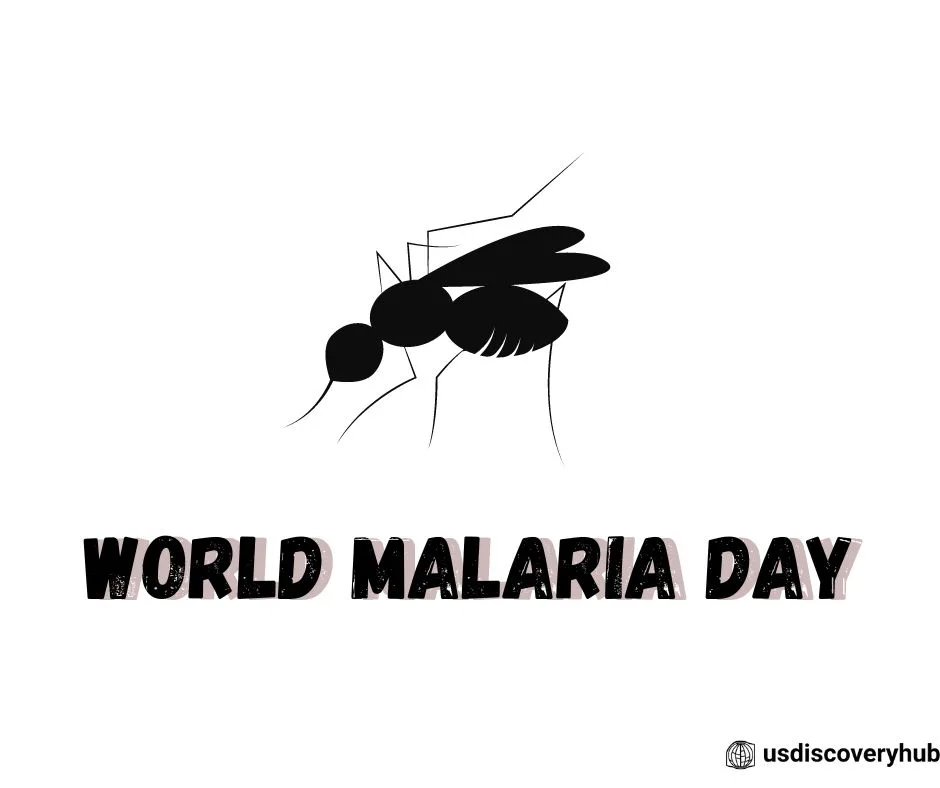




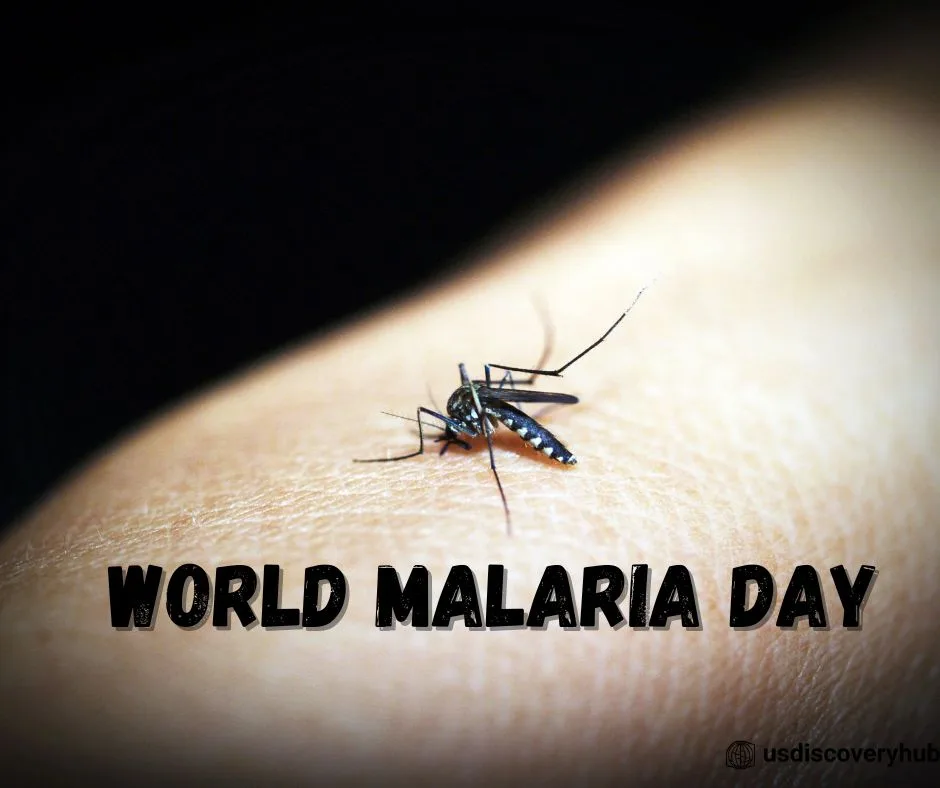
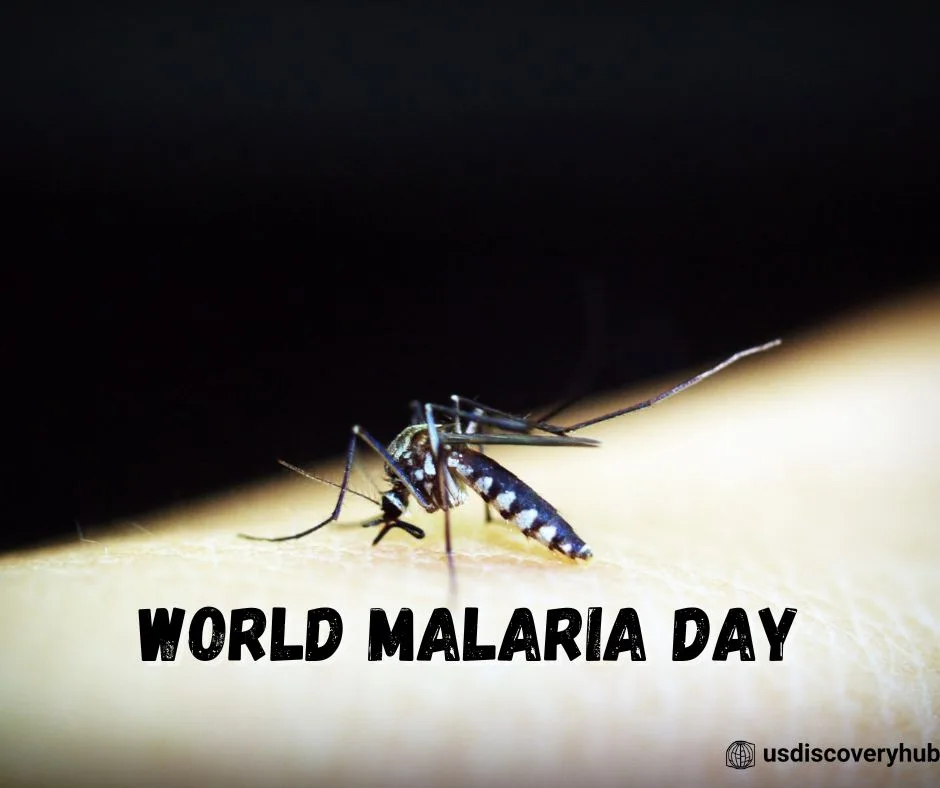
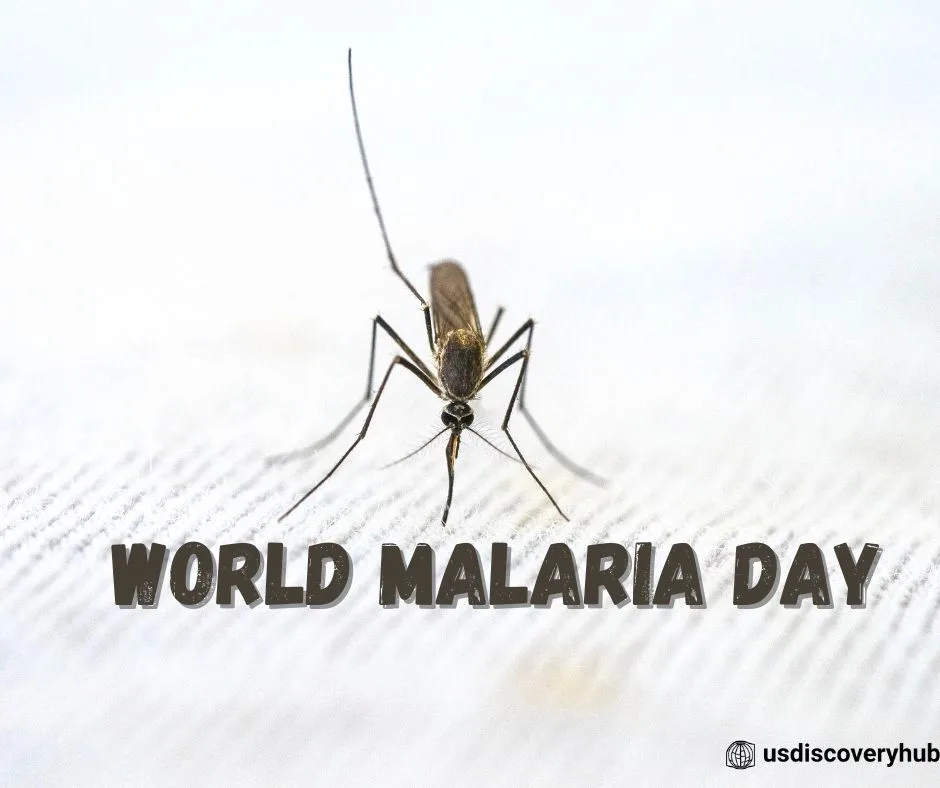
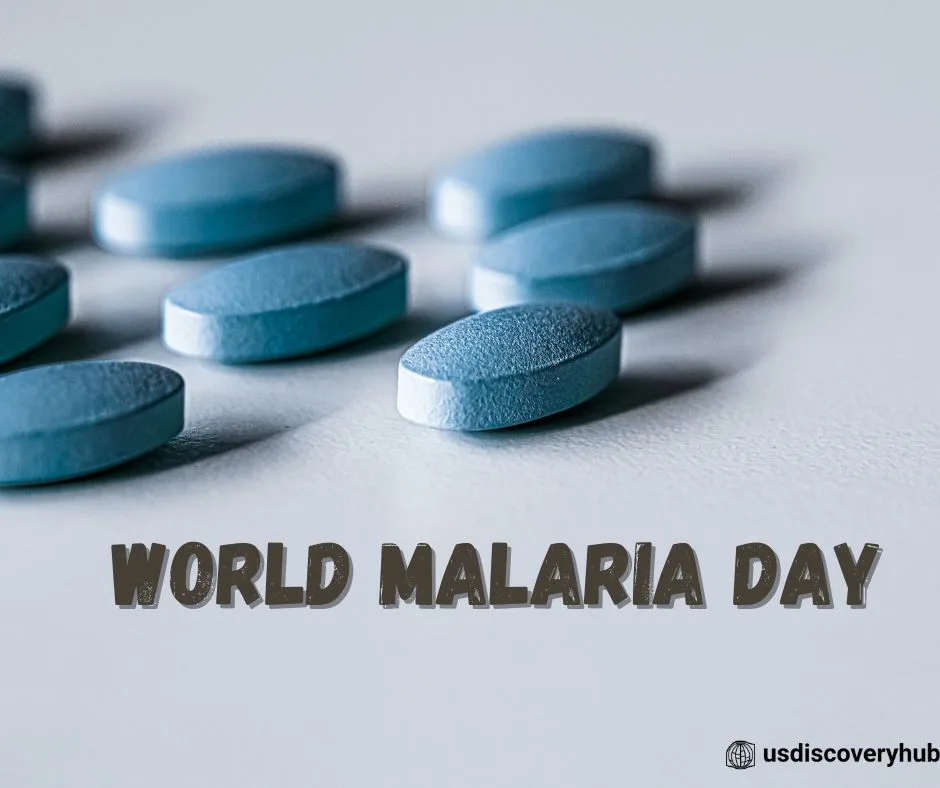
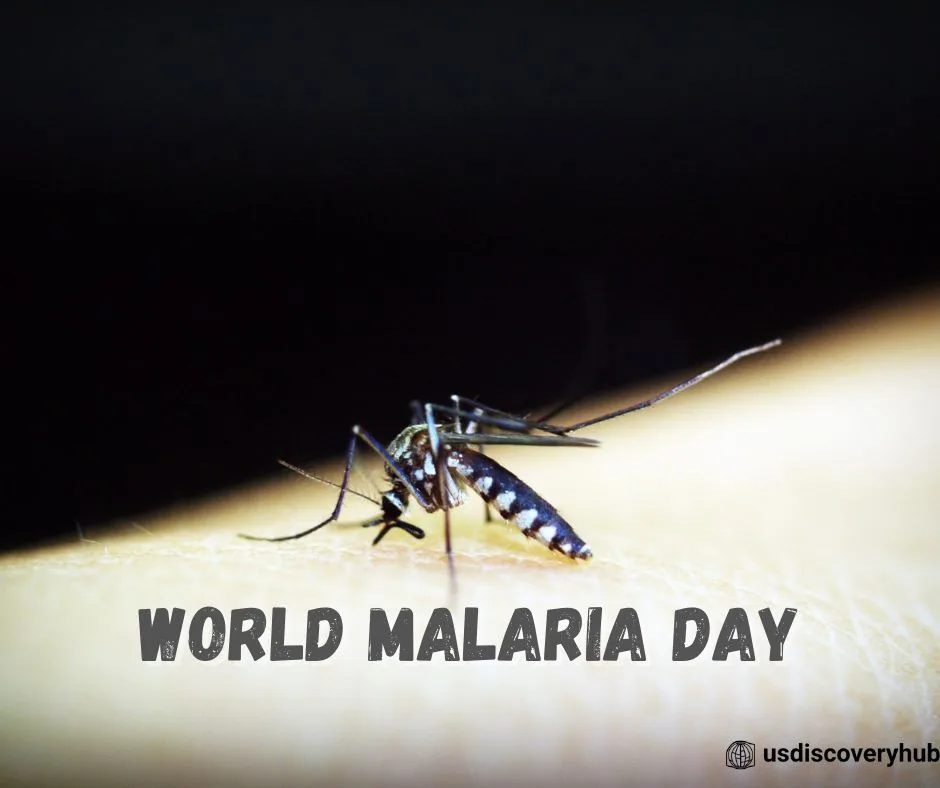
World Malaria Day related FAQs
Why do we celebrate Malaria Day?
World Malaria Day is celebrated on April 25 every year to raise awareness about the global burden of malaria, promote efforts to control and eliminate the disease, and showcase progress made in these efforts. It also seeks to mobilize communities, health workers, policymakers, and other stakeholders to work together towards a malaria-free world.
Who discovered Malaria Day?
World Malaria Day was established by the World Health Assembly in 2007. The decision was made to provide a platform for coordinated action against malaria and to raise awareness about the burden of the disease. So, it was not discovered by any individual, but rather established by a global health organization, the World Health Assembly.
What is the slogan for World Malaria Day ?
the World Health Organization (WHO) has used various slogans for previous World Malaria Day campaigns. Some examples of past slogans include:
“End Malaria for Good” (2020)
“Ready to beat malaria” (2019)
“Invest in the future: defeat malaria” (2018)
“End malaria for good: Innovate for a better future” (2017)
“Malaria Ends with Me” (2016)
Each slogan emphasizes the importance of working towards the goal of eliminating malaria and encourages individuals, communities, and governments to take action.
When did the malaria start?
Malaria is an ancient disease that has been affecting humans for thousands of years. The exact origins of malaria are not known, but it is believed to have originated in Africa and then spread to other parts of the world.
Malaria was first described in Chinese medical texts as early as 2700 BC, and it was also referenced in ancient Greek and Roman writings. The disease was prevalent in Europe during the Middle Ages and was known as “marsh fever” or “ague.”
Malaria was introduced to the Americas through the transatlantic slave trade in the 16th century, and it played a significant role in the colonization and development of many tropical regions. Today, malaria is still a major public health problem in many parts of the world, particularly in sub-Saharan Africa, where it accounts for a significant number of deaths, especially among young children.
What are the 5 types of malaria?
There are five species of Plasmodium parasites that cause malaria in humans:
1.Plasmodium falciparum: This is the most common and most deadly type of malaria parasite. It can cause severe illness, organ failure, and even death.
2.Plasmodium vivax: This type of malaria parasite can cause recurrent episodes of illness because it can remain dormant in the liver for months or even years before causing symptoms.
3.Plasmodium malariae: This type of malaria parasite can cause chronic infection and long-term damage to the kidneys.
4.Plasmodium ovale: This type of malaria parasite is less common than the others and is usually milder, but it can also cause recurrent episodes of illness.
5.Plasmodium knowlesi: This type of malaria parasite is primarily found in primates but can infect humans and cause severe illness.
Who named malaria?
The term “malaria” comes from the Italian words “mal” and “aria,” which together mean “bad air.” The name was given in medieval Italy because people believed that the disease was caused by the foul-smelling air emanating from swamps and marshes.
The association between malaria and mosquitoes as the disease’s vector was not discovered until the late 19th century. A British physician named Sir Ronald Ross is credited with proving that mosquitoes transmit malaria to humans. In 1902, he was awarded the Nobel Prize in Physiology or Medicine for his discovery, which paved the way for more effective control measures against the disease.